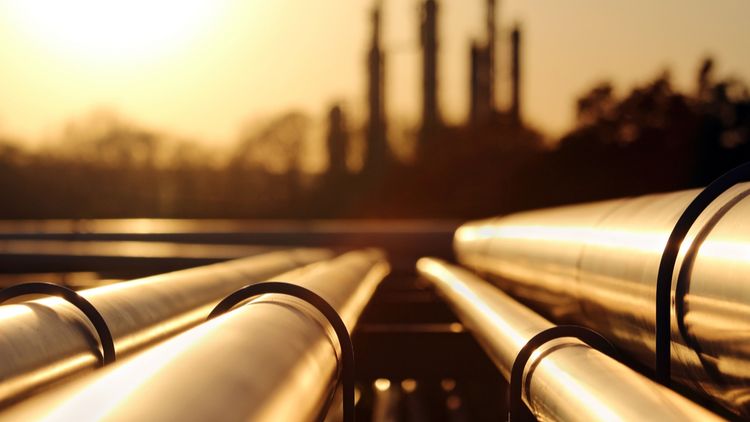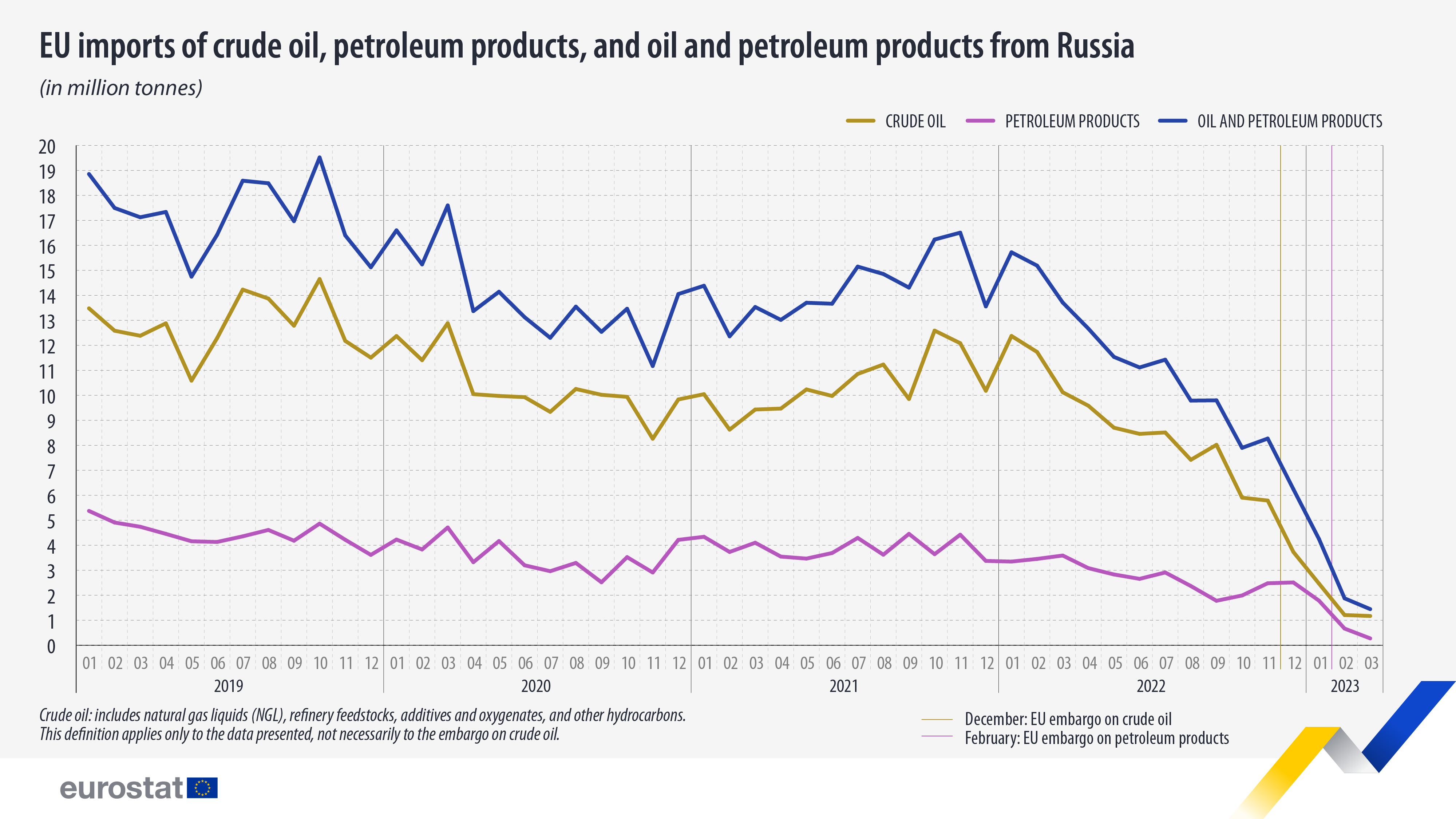Mar

During March of 2023, the European Union (EU) only imported 1.4 million tonnes (Mt) of crude oil and petroleum products from Russia. This number is significantly lower compared to the average monthly amount of 15.2 Mt imported between the years 2019 and 2022, marking a decrease of 90%.

Russia was once an important supplier of oil to the European Union, but their aggression towards Ukraine led to the EU Council implementing a 6th round of sanctions in June 2022. These sanctions included restrictions on imports of Russian oil into the EU. A ban on imports of crude oil by sea began on December 5, 2022, while the ban on petroleum products began on February 5, 2023.
Prior to the imposition of embargoes, the EU had already begun to alter their imports to come from different sources. Later, they hastened this modification in order to comply with the embargoes’ imposed deadlines.
The amount of crude oil imported showed a notable drop from 12.4 million tonnes in January 2022, before Russia unleashed its aggressive acts towards Ukraine, to 3.7 million tonnes in December 2022, which marked a 70% reduction due to the embargo imposed. This trend of declining imports persisted and reached 1.17 million tonnes in March 2023, signifying a massive slump of 91%.
In the meantime, there was a drop in imports of oil goods from 3.3 million tonnes during January of 2022 to just 0.7 million tonnes by February of 2023, a decrease of 80%. This occurred during the second date of the embargo deadline, and the decrease persisted until March of 2023, with only 0.3 million tonnes being imported, which equates to a massive 92% drop.
Russia's complete oil imports were not completely banned as there are specific exemptions in place that permit a restricted amount of imports based on certain circumstances.
EU's Approach To Replenish Stock In Emergency
The oil sector faced major upheaval due to the war of aggression on Ukraine by Russia. This led to two emergency stock releases in March and April 2022, which were implemented in order to restore stability to the market. These releases were organized by the International Energy Agency and supported by the European Union.
Many European Union countries collaborated in the collective efforts by utilizing some of their excess emergency resources, while some of them fell short of the stipulated minimum levels mandated by Article 3 of Directive 2009/119/EC.
The Commission reviewed the condition of both local and global markets in 2022. It suggested the members of the EU to replenish their crisis oil supplies to reach the minimum levels necessary before 31 March 2023.
During July 2022, there were 10 EU member countries that didn't meet their national minimum levels for oil reserves. These countries were Bulgaria, Czechia, Ireland, Croatia, Italy, Latvia, Lithuania, Hungary, Austria, and Romania. Nonetheless, by March 2023, only five of these countries, namely Bulgaria, Czechia, Ireland, Latvia, and Lithuania, still hadn't met their required oil reserves. Additionally, three of these countries are making progress in restocking their oil reserves.
If you have any questions, please take a look at our "contact us" section.









































